The olive oil wars
Italy convinced the world that it was the king of liquid gold by selling Spanish oil, but now Spain has appropriated 'Made in Italy'.
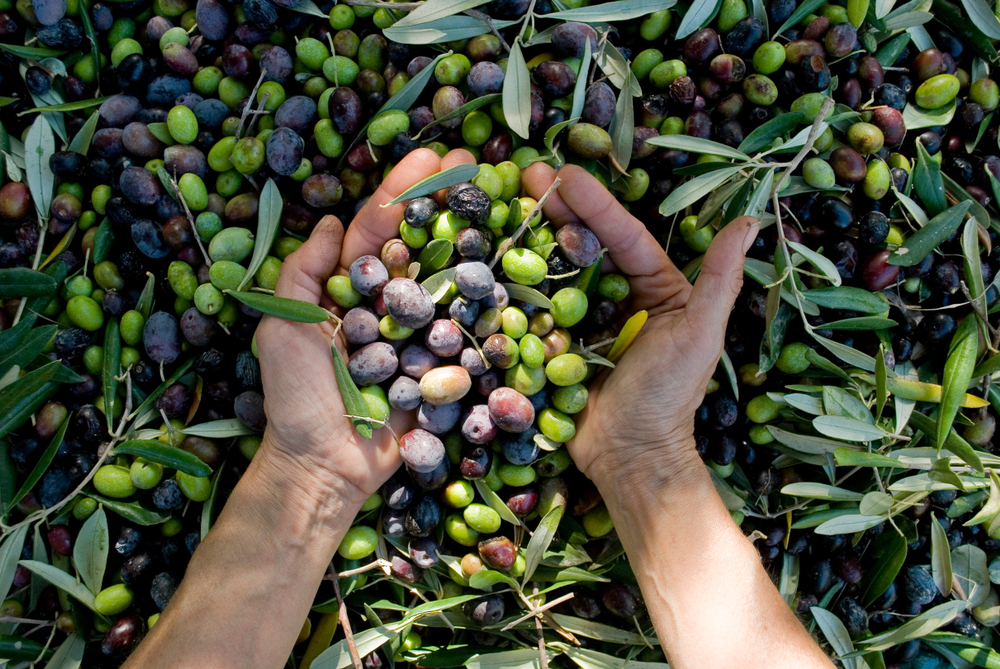
©angelaflu/Shutterstock
Wearing a flowered shirt and horn-rimmed glasses, Leonardo D’Errico, an Italian who has lived in Spain since the 1990s, looks back over his career surrounded by oil samples and hunting trophies that decorate the walls of his office in Torredonjimeno (Jaén). His story is also the story of the olive oil trade. It is the story of a powerful Italian industry that built an empire based on mass production in Spain, a neighbour that has now overtaken it in global export markets.
He is an oil broker, an intermediary who puts traders in contact with mills. Italy has always needed oil to export, and Spain, which normally produces about half of the world’s olive oil, has a surplus. This imbalance has caused a dependency whereby Italy buys, bottles under its own brands and sells back, at a higher price, large quantities of Spanish oil. And it is not exactly small fry (if you pardon the pun). Italy has been the destination of nearly half of Spanish exports, the vast majority of which it resells, at least since the 1990s.
But it is a business model that is becoming obsolete: “Our work has started to diminish because the big Spanish groups have direct relations with the producers”, says D’Errico. In 2023, Italy accounted for only 22% of Spain’s olive oil sales, a figure that was unthinkable a decade ago, when it accounted for 47%. The commercial chain has shortened and cheap bulk sales via Italy are giving way to packaged oil of good quality and value.
Yet despite this, the Spanish oil sector continues to speak Italian. Andalusia’s liquid gold is flooding international markets, yes, but with names such as Pompeian, Carapelli or Bertolli. “Made in Italy is untouchable”, warns Leonardo D’Errico.
“He who strikes first strikes twice”
With 283 million olive trees, Spain dominates the global olive oil market: in the 2021/22 season, the last one before drought destroyed its harvest, it produced 44% of the world’s oil and accounted for 59% of international sales, according to the International Olive Oil Council. Italy, meanwhile, produced barely 10% and exported 20%, although with a nuance: its sales, despite being overwhelmingly of Spanish oil, were 41% more expensive, according to Eurostat. The Spanish brand is struggling to compete with the Italian one.
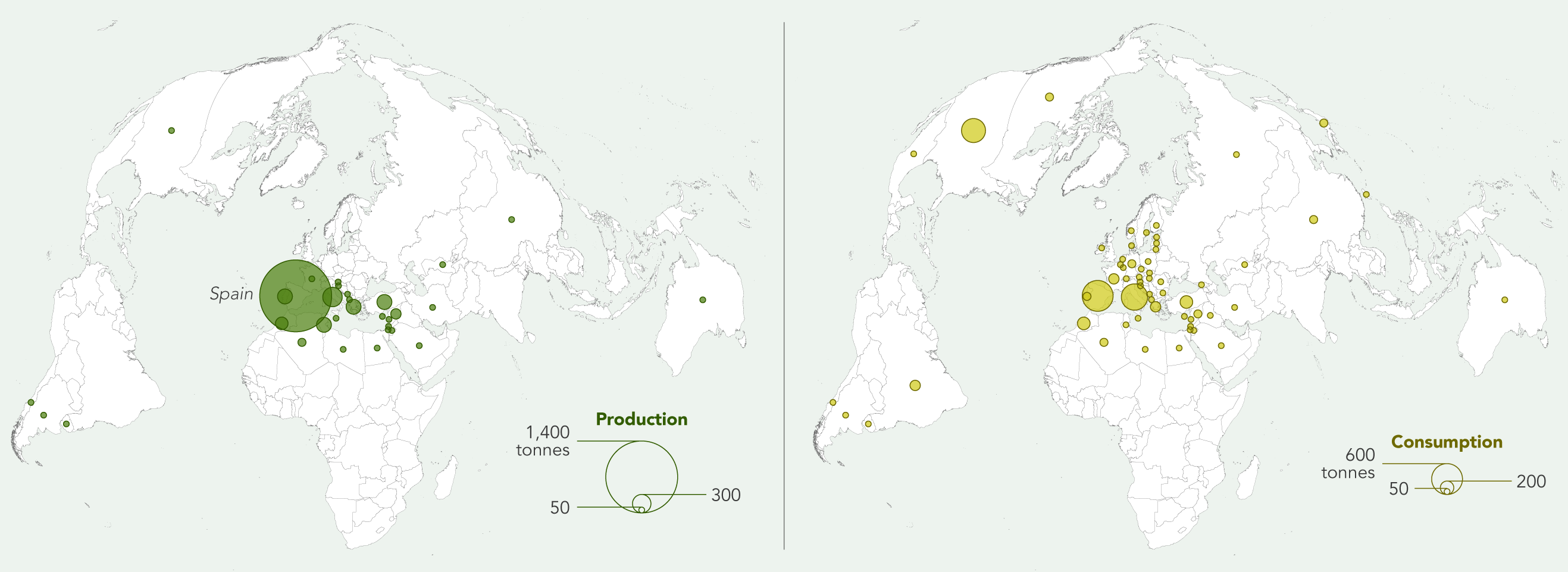
mapas-consumo-produccion-aceite-ordenador-texto-en
Olive oil production and consumption in the 2021/22 marketing year | Source: International Olive Oil Council (2024)
The Spanish brand Carbonell came up against this reality in the early 2000s: the brand landed in the United States with the Deoleo group – then called SOS, based in Córdoba – and set out to conquer a market that was clearly on the rise but, at the time, monopolised by Italy. It did not work. For Americans, as for many Europeans, olive oil is an Italian product.
The reasons for this association are historical. In the words of Teresa Pérez, Director of the Spanish Olive Oil Trading Association, “Spain was very well positioned before the Second World War and the dictatorship, but it was a closed market, and Italian immigration acted as an ambassador for olive oil”. Spain’s isolation also coincided with the creation of the European Economic Community, which in 1957 liberalised trade between its members and subsidised agricultural production, including Italian olive groves. Spain meanwhile had to pay tariffs to export to the rest of Europe.
“He who strikes first strikes twice”, remarks Rafael Pico, Director General of the Spanish Olive Oil & Pomace Olive Oil Exporters’ Association (ASOLIVA), a phrase recognisable across the sector. Italy arrived first and conquered the international markets.
But its production has stagnated since the 1990s and barely covers its domestic demand, so it was forced to turn to the Mediterranean basin to supply its export industry, which has tripled its sales in the last three decades. And in this search, Spain is the source of up to 90% of its imports, along with other markets in Greece, Tunisia, Portugal, Turkey and Syria.
In contrast to Italy’s stagnation, Spanish production has tripled since the 1990s. Entry into the European Economic Community in 1986 boosted the modernisation and competitiveness of its olive groves thanks to aid from the Common Agricultural Policy, but also its commitment to intensive and irrigated cultivation. As a result, whereas previously less than 100,000 hectares of olive groves were irrigated in Spain, by 2023 there were almost 900,000, and production in the province of Jaén alone has exceeded that of the whole of Italy.
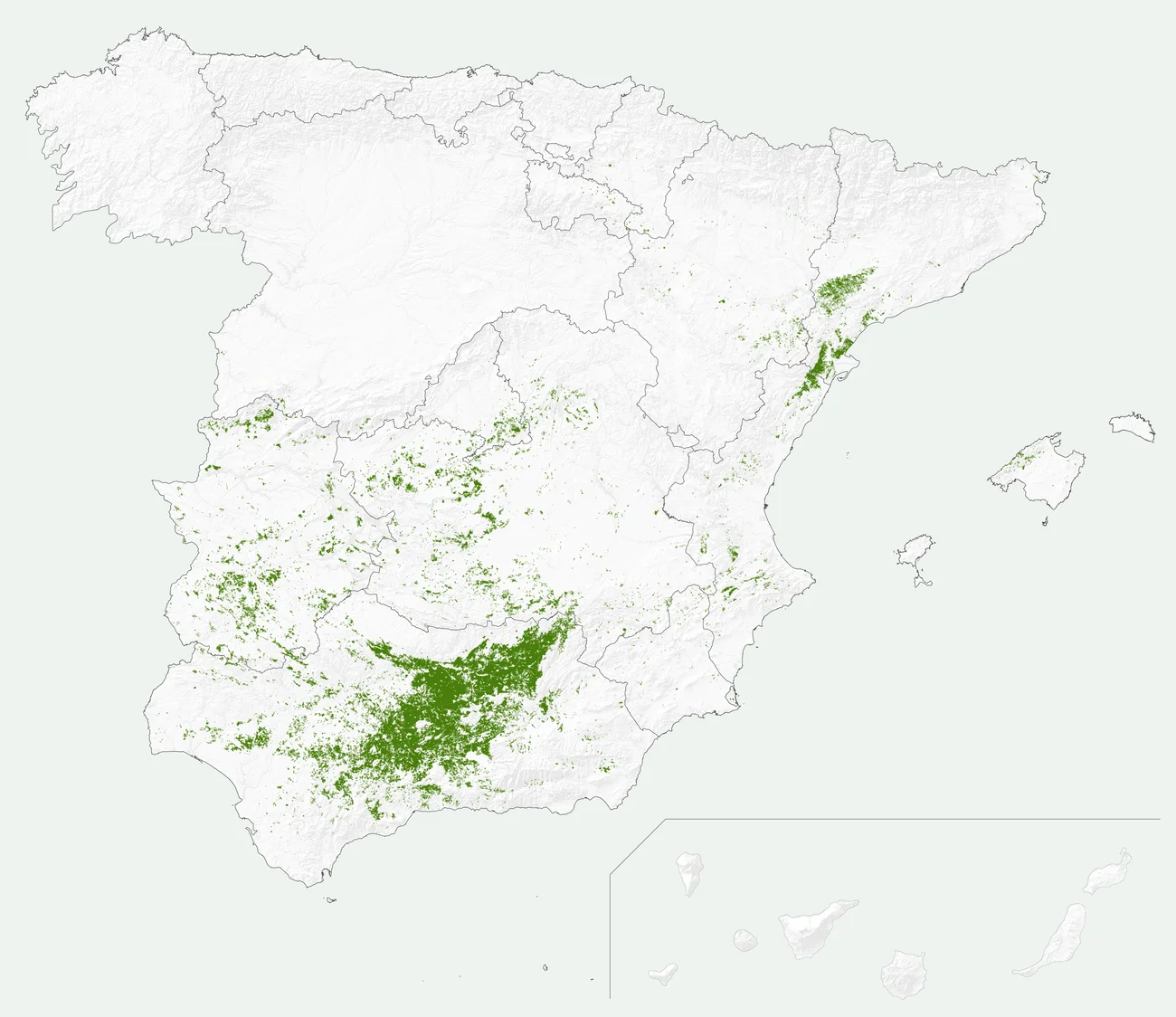
mapa-olivos-espana.png
Olive trees in Spain | Source: Corine Land Cover (2018)
“Spain has done a great job in agronomy and Italy has done a great job in marketing. We have dedicated ourselves to producing cheaply, to mechanising large areas and to irrigation”, says Rafael Gutiérrez, Director of Bulk Operations at the Dcoop cooperative, the world’s leading olive oil producer. Based in Antequera (Málaga), his company exports around half of what it produces, mainly in bulk to Italy. But Gutiérrez warns: “There are Italian names but not Italian brands”.
Dcoop itself has gone from being just a supplier of bulk oil to competing for its marketing abroad. To do so, it has “Italianised” its sales with the Pompeian brand, founded by Italian emigrants in 1906 in Baltimore: Dcoop partnered with Pompeian’s owners in 2015 to sell Andalusian oil in the United States under their seal and has ended up becoming the leading brand with a market share of 20%. “Pompeian realised that it needed solid production and now boasts 75,000 farmers in Andalusia behind it. It is not an Italian middleman who buys from all over the world, and this has caught on in America”, explains its bulk sales manager.
Something similar was done by Deoleo, the world’s largest olive oil bottler, which, although owned by the British investment fund CVC Capital Partners since 2014, maintains its headquarters in Spain. After the Carbonell fiasco, they changed their strategy and pulled in large-scale liquidity to buy the Italian brands Minerva (2005), Friol (2006) and Bertolli (2008). As a result of these acquisitions, oil produced in Córdoba is marketed worldwide under names such as Bertolli, Carapelli and Sasso, without even passing through Italy.
For Rafael Pérez, Deoleo’s Quality Director, his group has “turned the tables”. “We buy between 70-90% of our oil in Spain, we use Italian brands and distribute them to the rest of the world”. Through this, Spain has come to control the marketing world, and has taken advantage of its commercial pull to sell more, albeit at the expense of the Spanish brands themselves.
Thanks to these changes, Spain has become the undisputed leader in trade outside Europe since 2014 and in imports to the United States since 2016, which is already the second largest importer in the world and will soon become the leading consumer. In Mexico and Asia, emerging markets in which it has competed on equal terms with Italy, Spain basically monopolises sales, with Deoleo (Córdoba), Dcoop (Málaga), Sovena (Seville), Migasa (Seville) and Acesur (Jaén) being the major players in Spanish oil exports.
Olive oil trade flows between EU countries in 2022 | Source: Eurostat (2024)
“This has not been achieved overnight: profits from the Spanish industry has been invested in growing olive plantations, better industries and greater distribution in the markets. We have been able to invest, which the Italian sector has not”, argues Rafael Pico, Director of ASOLIVA.
Despite this, Italy is still the destination for a quarter of Spanish exports, something for which Pico blames farmers and cooperatives: “The philosophy of the industry is focused on the margins and the brand of the future to create a value chain for the whole sector, but the farmers and cooperatives don’t care, they only think about today”.
Cristóbal Cano, Head of Olive Oil at the Small Farmers’ and Ranchers’ Union, defends the agricultural sector, saying that the farmers “don’t actually sell the oil”, but that it is the Italians who come to buy from the mills and use their “position of power” to fix the price. And, he counters: “It is those higher up in the industry that focus on the short term, taking advantage of Italian brands without seeking a change that would benefit our country more”.
The commoditisation of oil
With 1,842 mills and around 400,000 olive growers, the atomisation of the sector has been one of the major stumbling blocks for the Spanish industry. At the other end of the chain, however, large Spanish supermarkets like Mercadona account for three quarters of sales and have a great capacity to influence price setting at source.
The production chain is built upon strong cooperatives, which account for around 70% of production, but the chain loses density when it comes to the marketing sector, the opposite problem to Italy. For this reason, in order to sell produce in numbers usually three times higher than national consumption, Spain is forced to resort to bulk sales, which account for around two thirds of exports.
“When you see the business from the production side you can see we have a problem, because we often have so much oil that we don’t know what to do with it, so we end up practically giving it away”, says Rafael Pérez of Deoleo. Nevertheless, others, such as the Managing Director of the Seville cooperative Oleoestepa, Álvaro Olavarría, laud “the luck of having a deficit market” such as the Italian one that covers Spain’s sales needs, although he prefers to diversify his business: “Bulk is a commodity and to depend exclusively on it is to put yourself in the lap of the gods”.
Oleoestepa, which has 7,000 members and only works with extra virgin olive oil, has prioritised its bottling business this year – which is more profitable – over its bulk business due to the lack of olives, so sales to Italy have been insignificant. But its Managing Director makes it clear: “If the weather is good, we tend to go to international bulk markets such as Italy”.
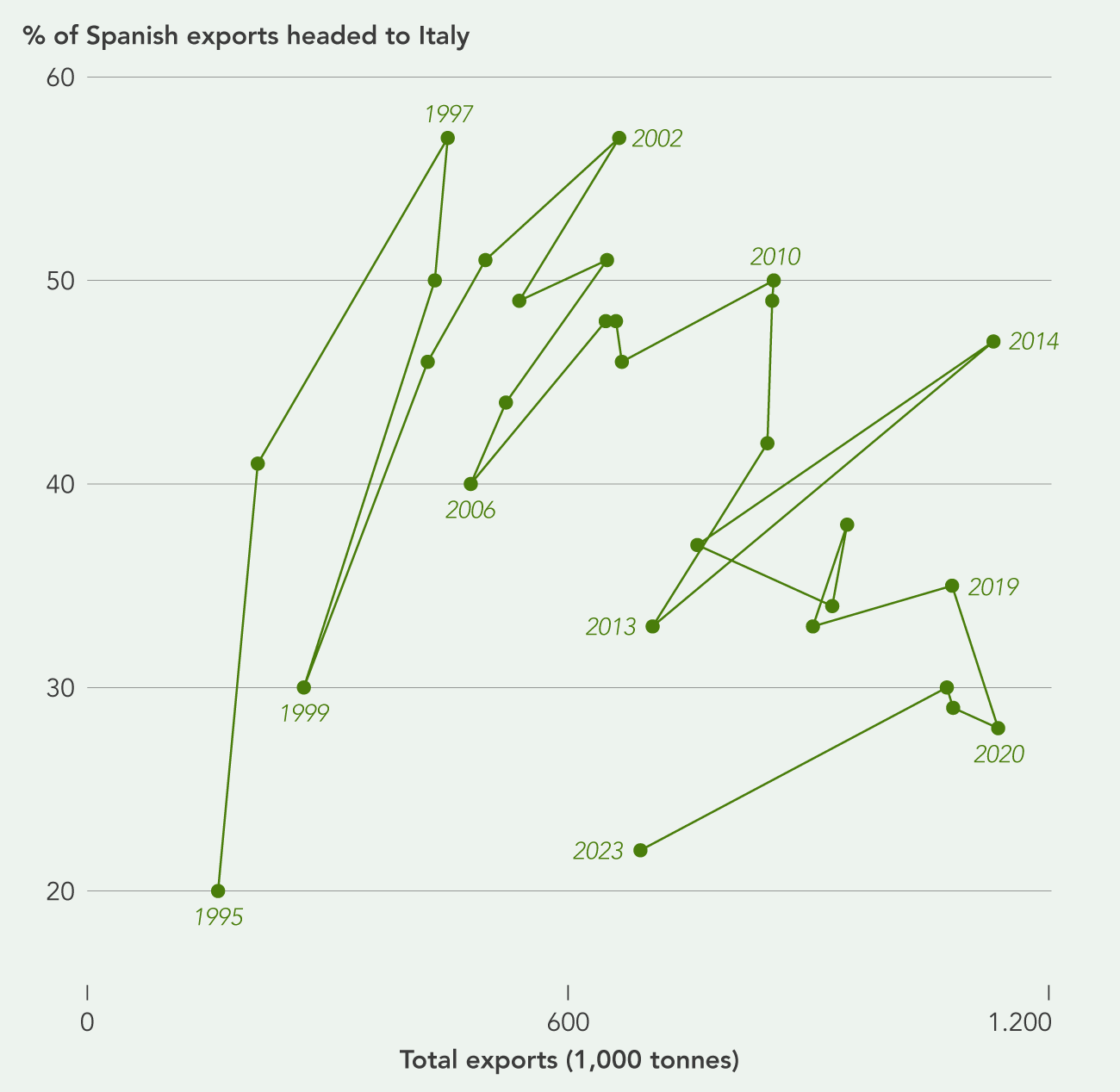
grafico-exportaciones-españa-italia-ordenador-en
Evolution of Spain's total exports and exports to Italy | Source: Eurostat
The commitment to quality and own brand is replicated by Aires de Jaén, which exports between 60% and 70% of its harvest from Jabalquinto, only in packaged formats. For Ichun Lin, Export Manager for the Jaén company, “your business is only worth as much as your brand is worth”, so it is important to “give reasons for them to choose you and tell a story behind the product”. “If you only sell in bulk, strategically you don’t add value. You have to go for the packaged product just like Italy did fifty years ago”, says Lin.
But the battle for quality is not being won by the Spanish, as shown by the difference in prices and the number of designations of origin; Italy has twelve more than Spain. The picual olive variety is the most common in Spain and also the most celebrated and awarded in the world, but if it is harvested after October it acquires a flavour that is not usually appreciated abroad. Yet in Spain, many farmers leave the olives to ripen on the tree in search of a higher yield.
“Spanish oil has to be corrected with other sweeter oils. In Italy it is often said that it tastes like cat piss and they prefer to buy it in Greece”, says the intermediary Leonardo D’Errico, who accuses Spanish producers of putting “kilos” before quality. Deoleo takes the same line: “The average quality of Argentina and Chile is superior to that of Spain, and – of course – so is Italy’s. We are one step behind in terms of quality and we cannot afford to miss the boat here”.
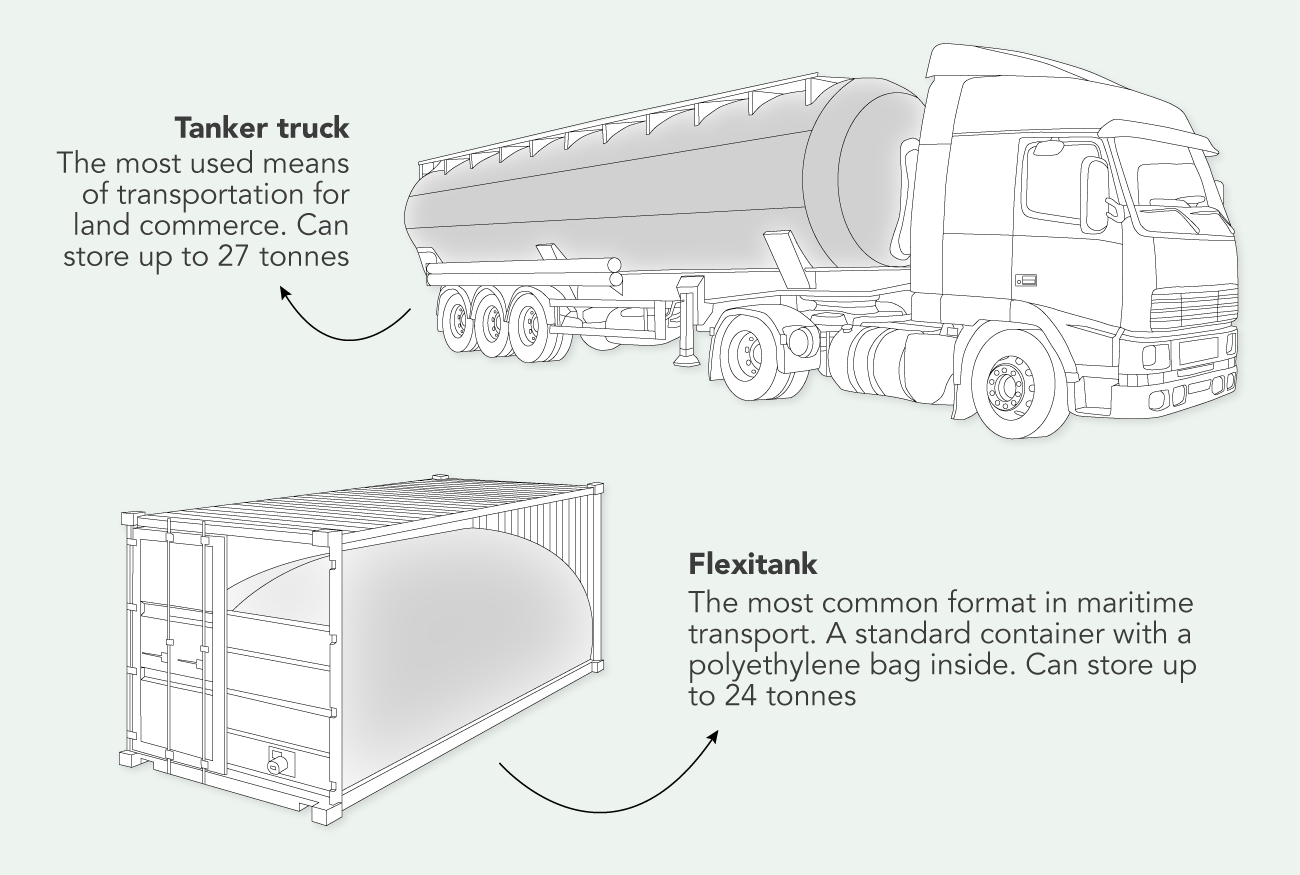
Sky high ambitions
Since 1990, olive oil consumption has doubled worldwide. Despite this, the liquid gold still accounts for just 1% of global vegetable oil consumption, which is dominated by palm, soybean, rapeseed and sunflower oil. The scope for growth is therefore enormous.
The concern now is supply, according to Jaime Lillo, executive director of the International Olive Council. The olive tree needs less water than most crops, but “the big question is how the Mediterranean basin is going to adapt to climate change”. With increasingly scarce and erratic rainfall, access to water will be a key issue for the competitiveness of olive groves, especially in Spain, which is the European country with the highest percentage of its territory at risk of desertification, at 74%. Meanwhile, 31% of its farms are already irrigated and olive groves continue to spread along the banks of the Guadalquivir.
The potential for olive oil production in Spain is 2.2 million tonnes, when taking into account the increase in plantations since the production peak of the 2018/19 season, when 1.8 million tonnes were harvested. Despite this, not everyone looks favourably on this scenario. For Dcoop, in fact, “the lean season will come when it rains”. A record harvest would knock down sales prices and force them to resort to bulk sales and Italian re-exports.
Meanwhile, Italian farmers are crying out against the “iberisation” of their olive production, railing against Spain’s “super-intensive, single-variety” model. The battle for numbers has long since been lost, but Italy remains top dog in marketing and has clung to the quality of its limited harvest.
The oil wars, far from being history, are intensifying as the business grows and the challenges increase. For now, the Spanish brand continues to follow the Made in Italy’s lead.
Original source: https://elordenmundial.com/guerras-aceite-oliva-espana-italia/
